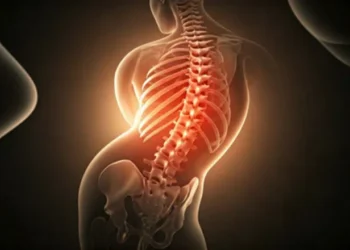Turning 40 often marks a new chapter in life one filled with greater self-awareness, wisdom, and confidence. But for many, it also comes with a frustrating reality: losing weight feels harder than ever. Maybe the pounds don’t come off as quickly as they used to, or you find yourself gaining weight despite eating the same way you did in your 20s or 30s.
If this sounds familiar, you’re not alone. Weight loss after 40 is a common struggle, but here’s the good news: while your body does change, lasting weight loss is still very possible with the right approach. In this article, we’ll break down what actually changes after 40, why the old methods may not work as well anymore, and what strategies still deliver results.
What Changes in Your 40s That Affects Weight Loss
The biology of your body shifts in midlife, and understanding these changes is the first step toward success.
Table of Contents
1. Slower Metabolism
As we age, metabolism naturally slows down. Your body burns fewer calories at rest, which means eating the same portions you did at 25 may now lead to weight gain.
2. Hormonal Shift
For women, perimenopause and menopause can lower estrogen levels, which often lead to increased fat storage around the abdomen. For men, testosterone levels begin to decline, making it harder to maintain lean muscle mass.
3. Loss of Muscle Mass
After 30, adults lose 3–8% of muscle mass per decade. Since muscle tissue burns more calories than fat, less muscle means fewer calories burned daily.
4. Lifestyle Pressures
By 40, many people juggle demanding careers, raising children, or even caring for aging parents. Stress, lack of sleep, and busy schedules can all contribute to weight gain.
5. Insulin Sensitivity Declines
The body becomes less efficient at managing blood sugar levels, which can lead to increased fat storage especially when diets are high in processed carbs and sugar.
What Still Works for Weight Loss After 40
While these changes may sound discouraging, here’s the truth: weight loss after 40 is not impossible you just need strategies that work with your body instead of against it.
1. Strength Training Is Non-Negotiable
If you want to boost metabolism after 40, strength training is your best friend. Lifting weights, doing bodyweight exercises, or resistance band workouts all help rebuild and preserve muscle mass.
Benefits include:
- Higher resting calorie burn
- Improved bone density (especially important for women after menopause)
- Tighter, leaner body composition
Aim for 2–3 strength training sessions per week targeting all major muscle groups.
2. Prioritize Protein
Protein is crucial for muscle repair, hormone balance, and satiety. Many people over 40 unintentionally under-eat protein, making it harder to lose fat and maintain muscle.
Good protein sources include:
- Lean meats (chicken, turkey, beef)
- Fish and seafood
- Eggs
- Legumes and beans
- Greek yogurt or cottage cheese
- Plant-based proteins like tofu and tempeh
Try to include protein at every meal, aiming for at least 20–30 grams.
3. Rethink Cardio: Quality Over Quantity
While endless hours of cardio aren’t the answer, incorporating the right type of cardiovascular exercise helps with calorie burn, heart health, and fat loss.
The best choices after 40 include:
- Walking: Low-impact, easy on the joints, and great for daily consistency.
- Interval training: Short bursts of higher-intensity activity followed by rest gentler than hardcore HIIT, but still effective for metabolism.
- Cycling or swimming: Excellent for those with joint concerns.
Instead of overdoing cardio, focus on a mix of strength + moderate cardio.
4. Mind Your Nutrition—But Don’t Crash Diet
Extreme diets that worked in your 20s often backfire after 40, slowing metabolism even more. Instead, focus on balanced, sustainable eating.
Key strategies:
- Cut refined carbs & sugars: These spike blood sugar, worsen insulin resistance, and encourage fat storage.
- Emphasize whole foods: Vegetables, lean proteins, healthy fats, and whole grains should make up most of your plate.
- Watch portion sizes: With a slower metabolism, overeating even healthy foods can stall progress.
- Stay hydrated: Dehydration often masquerades as hunger, leading to unnecessary snacking.
5. Sleep Like It’s Your Job
Poor sleep affects hunger hormones (ghrelin and leptin), making you crave more sugar and carbs. It also reduces willpower and increases stress, which can contribute to weight gain.
Aim for 7–9 hours of quality sleep by:
- Sticking to a consistent sleep schedule
- Creating a dark, quiet sleep environment
- Avoiding screens at least an hour before bed
- Limiting caffeine later in the day
6. Manage Stress Levels
Stress raises cortisol, a hormone that encourages fat storage (especially belly fat). Chronic stress also increases emotional eating.
Effective stress relievers:
- Deep breathing exercises or meditation
- Yoga or tai chi
- Regular physical activity
- Setting boundaries around work/life balance
7. Check Hormones and Health Markers
Sometimes, despite doing everything right, weight loss feels impossible because of hidden health factors. After 40, it’s worth checking with your doctor to test:
- Thyroid function (hypothyroidism slows metabolism)
- Hormone levels (estrogen, progesterone, testosterone)
- Blood sugar and insulin sensitivity
- Vitamin D and other nutrient deficiencies
Addressing underlying imbalances can make weight loss more effective.
Myths About Weight Loss After 40
Let’s clear up a few common misconceptions:
Myth 1: “It’s impossible to lose weight after 40.”
Wrong. It’s harder, yes, but not impossible. With the right plan, people in their 40s, 50s, and beyond can achieve and maintain a healthy weight.
Myth 2: “Cardio is all you need.”
Cardio alone won’t rebuild lost muscle or increase resting metabolism strength training is essential.
Myth 3: “You just need to eat less.”
Eating too little can backfire by slowing metabolism and leading to nutrient deficiencies. Quality matters as much as calories.
Myth 4: “Supplements and quick fixes work.”
Detox teas, fad diets, and “miracle pills” don’t address the real biological shifts happening in your body. Sustainable lifestyle changes do.
Realistic Expectations
One of the biggest shifts after 40 isn’t just physical it’s mental. Weight loss might not happen as quickly as it did decades ago, but that doesn’t mean it won’t happen at all.
- Aim for 1–2 pounds per week slower, steadier progress is easier to sustain.
- Focus on body composition, not just the scale you might lose inches and gain muscle, even if the scale doesn’t drop dramatically.
- Prioritize long-term habits over short-term results.
Final Thoughts
Weight loss after 40 may feel different, but it’s far from impossible. Yes, your metabolism slows, hormones shift, and responsibilities pile up but by focusing on strength training, protein-rich nutrition, better sleep, stress management, and overall lifestyle habits, you can still lose weight, feel great, and thrive in midlife and beyond.
For many, the key to long-term success is not going it alone. Organizations dedicated to weight management and wellness can provide the structure, accountability, and expert guidance needed to stay on track. These programs often offer personalized coaching, nutritional support, and fitness strategies tailored specifically for midlife and beyond. More importantly, they create a sense of community, helping you navigate setbacks and celebrate progress along the way.
Remember: turning 40 doesn’t mean your best health is behind you it just means the strategy has to evolve.


 Home
Home










